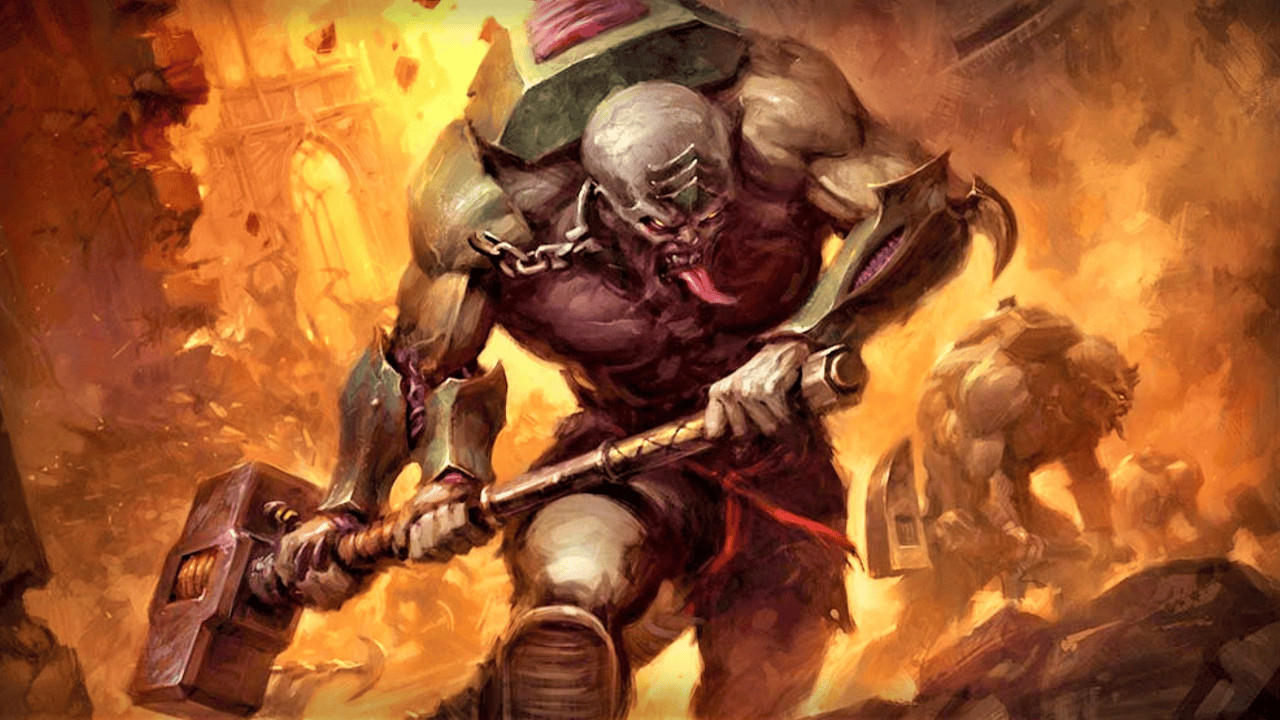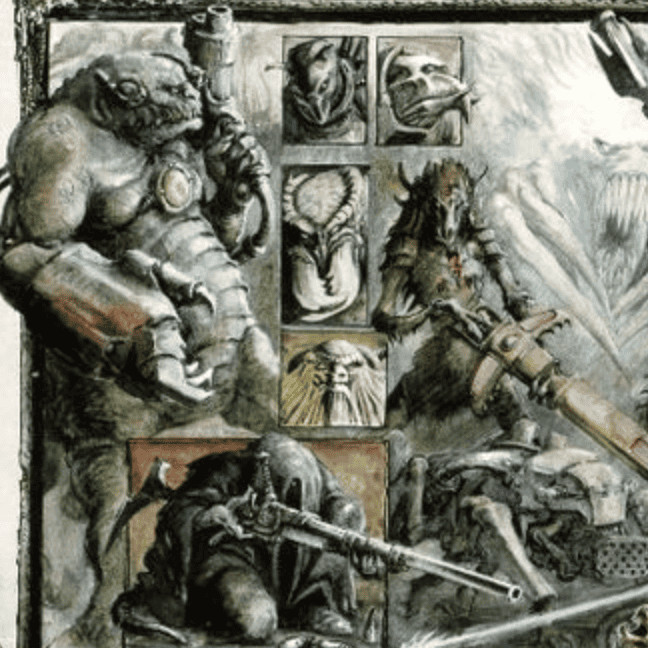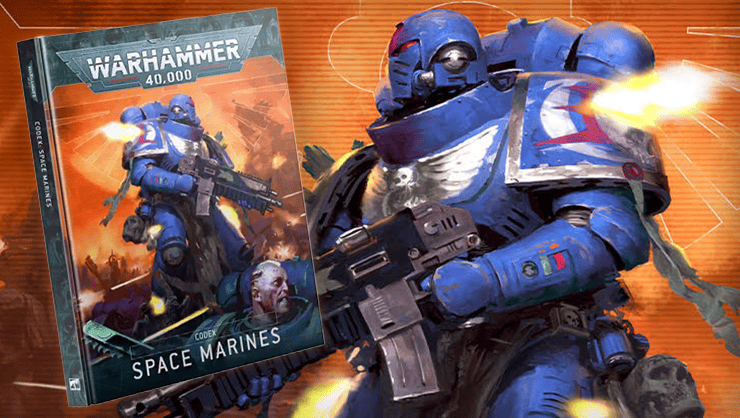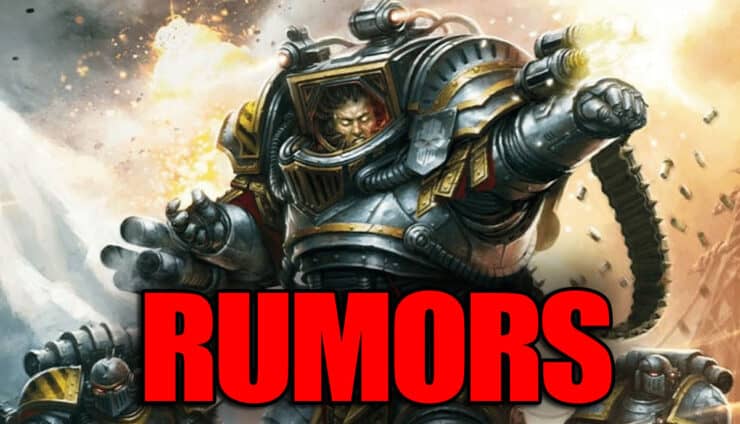From the Eldar to the Tyranids, Xenos factions (even the lesser ones) in Warhammer 40,000 (40k) are diverse; here are the most dangerous races.
Updated February 12th, 2025, by Rob Baer with new information and links to relevant content.
If you’re new to Warhammer 40,000 or a veteran hobbyist looking for a refresher, the Xenos span everything in the universe that isn’t tied into mankind or Chaos. They have vastly different reasons for fighting, are very diverse in appearance, and hold entire star systems. One thing all the factions have in common, though, is these races fight countless battles in the endless wars of Warhammer 40k!
If you couldn’t remember them all, these are all the Warhammer 40k Xenos Factions, along with the catch-all “lesser-known” category featuring Kroot, Hrud, and more :
The Leagues of Votann | The Aeldari | The Drukhari | The Necrons | The Tau Empire
The Tyranids | The Genestealer Cults | The Orks |40k Lesser-Known Xenos
The Threat From Beyond:
In the cold, unforgiving expanse of the 41st millennium, humanity’s greatest enemy isn’t just the heretics, the traitors, or the forces of Chaos—it’s the Xenos. These alien races, each with their own terrifying abilities and twisted motivations, have been waging war against the Imperium for millennia. And while there are plenty of nasty threats in the galaxy, some Xenos are just on another level when it comes to sheer danger.
Whether it’s the unyielding hunger of the Tyranids or the relentless cold precision of the Necrons, the Xenos aren’t here to talk. They’re here to conquer, annihilate, and sometimes, just consume everything in their path. In this galaxy where survival is never guaranteed, these alien invaders bring the kind of chaos that’s enough to make even the most battle-hardened Imperium soldiers rethink their life choices.
Let’s break down the most deadly, the most terrifying, and the most no-holds-barred Xenos threats that are out there hunting in the shadows of the Warhammer 40,000 universe. Trust me, these aren’t your average space invaders.
The Leagues of Votann
Origins & Lore

Officially reintroduced to the Warhammer 40K universe in 2022, the Votann race brings a fresh yet nostalgically familiar flavor to the tabletop. You might remember their ancestors, the Squats, who were around in the earlier editions of 40K before mysteriously vanishing. Well, the Leagues of Votann are here to carry on that legacy with some serious upgrades.
The Leagues of Votann, often simply called “the Kin,” trace their roots back to ancient Terra (Earth for those not up on their Warhammer 40,000 imperial and xenos lore). Millennia ago, these sturdy, resilient folks ventured into the treacherous galactic core, a region so dangerous that even the most foolhardy spacefarers give it a wide berth.
But the Kin thrived there, thanks to their exceptional technology and indomitable spirit. They’re not just tough—they’re survivors who have carved out an impressive territory amidst the stars, largely avoiding the chaotic wars that plague other parts of the galaxy.
Key Characteristics & Technology
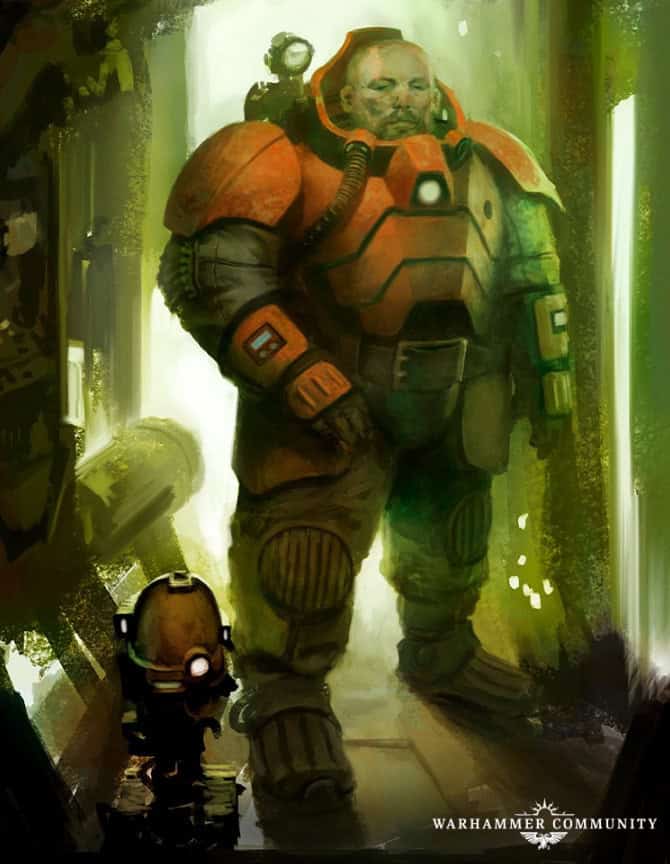
Their society is built around a pragmatic and cautious ethos. They don’t engage in unnecessary conflicts but focus on self-preservation and economic prosperity. Think of them as the ultimate space miners, equipped with some of the galaxy’s most advanced technology.
Their gear and weaponry are a cut above the rest, often surpassing even the vaunted tech of the Imperium. We’re talking about energy shields, high-powered mining lasers repurposed into devastating battlefield weapons, and power armor that makes even the Space Marines envious.
One of their most intriguing technological marvels is the Votann Ancestor Cores. These ancient supercomputers house the collective wisdom and knowledge of the Kin’s ancestors, serving as guides and decision-makers for their society. Imagine having a super-intelligent, centuries-old AI to help you navigate life’s toughest decisions. Pretty neat, right?
Gameplay & Strategies

Tactically, the Kin excel at defensive play. They can hold objectives with a stubborn determination that would make a rock look wishy-washy. Their ranged weaponry is second to none, allowing them to lay down a withering hail of fire while their infantry holds the line. This makes them a fantastic choice for players who enjoy a methodical, strategic approach to the game.
But don’t let their defensive strengths fool you—they can hit back hard when needed. The Leagues of Votann can unleash devastating counterattacks with their high-tech weaponry, turning the tide of battle in an instant. Their vehicles, often repurposed mining rigs, pack a serious punch and can withstand a lot of punishment, making them both effective and reliable.
In summary, the Leagues of Votann bring a unique blend of resilience, advanced technology, and Xenos tactical flexibility to Warhammer 40,000. Whether you’re a new player looking for a robust and forgiving faction or a seasoned veteran seeking a fresh strategic challenge, the Kin offers a rich and rewarding experience.
So, grab your mining laser and power armor, and join the Xenos Leagues of Votann in their quest for prosperity and survival in the universe of Warhammer 40,000! If you want to learn how to play the Leagues of Votann Xenos race in Warhammer 40,000 (40k), check out our guide on the army here! Or pick up their Combat Patrol Bundle and get hobbying right away!
The Aeldari
The Fall of the Eldar

Picture this: millions of years ago, long before humanity even dreamt of space travel, the Eldar ruled the galaxy with an iron grip. They were the apex civilization, unmatched in technology, culture, and psychic prowess. Life was good, maybe a bit too good.
You see, the Eldar’s downfall began with their excesses. As their empire grew, so did their indulgence in hedonistic and reckless behaviors. They became so consumed by their pleasures that they inadvertently gave birth to a new Chaos god, Slaanesh, through their collective psychic energy.
This event, known as the Fall of the Eldar, was a catastrophe of cosmic proportions. When Slaanesh emerged, it unleashed a psychic shockwave that obliterated most of the Eldar civilization in an instant, consuming countless souls and leaving their once-glorious empire in ruins.
Craftworlds: The Nomadic Survivors
Not all Eldar were consumed in the Fall, though. Foreseeing the impending disaster, some fled aboard massive, biomechanical starships called Craftworlds. These Craftworlds now roam the galaxy, each a self-sufficient, floating city-ship carrying the last remnants of Eldar civilization. The Craftworld Eldar are the stoic survivors, dedicated to preserving what’s left of their culture and staving off extinction.
Each Craftworld is a unique entity with its own culture and strategic focus. For example, Craftworld Ulthwé is known for its strong seers and psychic warriors, always prepared to defend against Chaos incursions.
Meanwhile, Craftworld Biel-Tan focuses on military prowess, seeking to reclaim lost Eldar worlds and restore their ancient empire. Regardless of their specific focus, all Craftworld Eldar share a deep sense of duty and an unyielding commitment to their people’s survival.
Harlequins: Warriors and Performers

Harlequins serve the Laughing God, Cegorach, and act as both entertainers and protectors of the Eldar Webway, a network of interdimensional tunnels that allows for faster-than-light travel. In battle, they move with unparalleled agility, using their acrobatic skills and advanced technology to confound and decimate their enemies.
On the tabletop, Harlequins are a highly elite force known for their speed and devastating close-quarters combat abilities. Playing them requires finesse and tactical acumen, making them a rewarding challenge for experienced players.
Ynnari: The New Hope
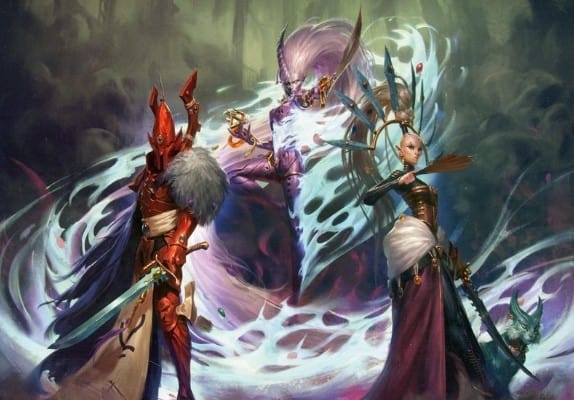
The Ynnari are unique in that they draw members from all branches of the Eldar—Craftworld, Harlequin, and even the dark Drukhari. This makes them a diverse and versatile force capable of adopting various tactics and strategies.
On the tabletop, the Ynnari are defined by their ability to gain bonuses when units die, making them a dynamic and reactive army. This adds a layer of strategy that keeps opponents on their toes, as every casualty can potentially turn the tide of battle in the Ynnari’s favor.
In conclusion, the Eldar are a faction rich in history, tragedy, and complexity. Their advanced technology and psychic abilities make them formidable on the battlefield, while their deep lore provides endless storytelling possibilities.
Whether you’re drawn to the disciplined warriors of the Craftworlds, the theatrical lethality of the Harlequins, or the revolutionary zeal of the Ynnari, there’s an Eldar faction for you. So, pick up your shuriken catapult and your Spirit Stone, and join the fight to save the Eldar race from the brink of extinction in the grimdark universe of Warhammer 40k!
If you want to learn how to play the Xenos Race Aeldari in Warhammer 40,000 (40k), check out our guide on the Xenos army here! Or pick up their Combat Patrol Bundle and get hobbying right away!
The Drukhari
Origins and Dark History
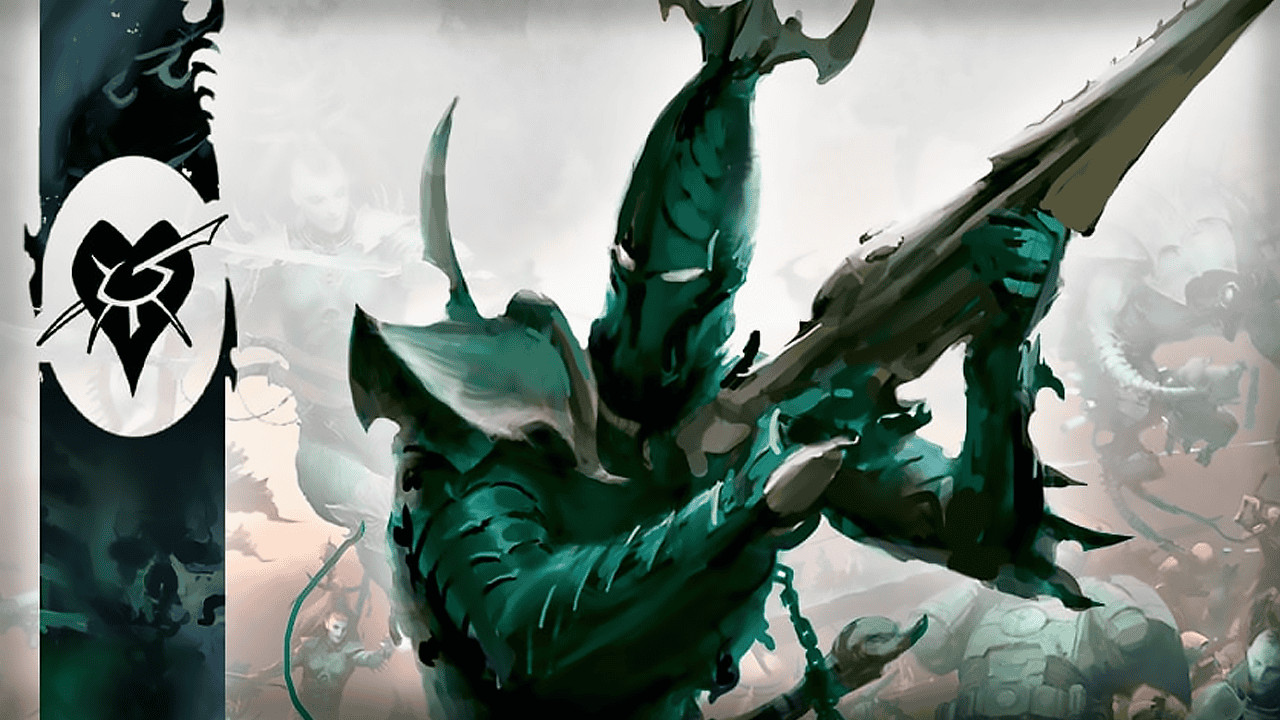
Their origin story is intertwined with the catastrophic Fall of the Eldar. While the Craftworld Eldar fled into space and the Harlequins retreated into the Webway, the ancestors of the Drukhari delved even deeper into their depravity. They took refuge in the labyrinthine Webway, creating the twisted and nightmarish city of Commorragh.
Commorragh is a place that would make even the most hardened villain shudder. It’s a vast, sprawling metropolis where the only rule is survival of the fittest, and the currency is pain and suffering. Here, the Drukhari indulge in their most sadistic urges, capturing and torturing countless victims to stave off their eternal damnation.
You see, the birth of Slaanesh left a mark on all Eldar, and the Drukhari must consume the suffering of others to prevent their souls from being devoured by the Chaos god. Pretty dark, huh?
Life in Commorragh

The Drukhari society is also home to the Haemonculi Covens, groups of twisted flesh sculptors and mad scientists who experiment on both captives and willing subjects. Their creations are grotesque and terrifying, designed to inflict maximum pain and suffering.
Then there are the Wyches, gladiatorial warriors who entertain the masses with their deadly combat skills in the arenas of Commorragh. Each Wych fight is a spectacle of blood and brutality, with survival being the ultimate prize.
Raiding Tactics and Strategies

On the tabletop, Drukhari’s armies are all about speed, precision, and overwhelming force. Their units are highly mobile, often using their superior speed to outflank and outmaneuver their opponents.
They excel in close combat, with their Wyches and Incubi delivering devastating blows once they get up close and personal. However, they’re not just about brute force—Drukhari players must be cunning and strategic, as their units are generally fragile and can’t withstand prolonged firefights.
A typical Drukhari raiding force might include a mix of fast-moving skimmers, agile jetbikes, and lethal infantry. They use their speed to control the battlefield, picking off key targets and exploiting weaknesses in the enemy’s defenses. The Haemonculi Covens add a layer of resilience with their grotesque creations, such as Wracks and Talos Pain Engines, which can soak up damage and punish in return.
One of the most interesting aspects of playing Drukhari is the Power from Pain rule, which represents their ability to draw strength from suffering. Drukhari units become more powerful as you destroy more units. This mechanic rewards aggressive playstyles and keeps the pressure on the opponent, making every turn more intense and exciting.
In conclusion, the Drukhari are a Xenos faction that brings a unique blend of speed, lethality, and dark charm to Warhammer 40,000. Their lore is rich with intrigue and horror, and their playstyle on the tabletop is both challenging and rewarding.
If you’re drawn to the darker side of the Eldar and enjoy a fast-paced, aggressive approach to the game, the Drukhari might just be the perfect faction for you. So, grab your splinter rifle and boarding hook, and join the Xenos dark raiders of Commorragh in their eternal quest for pain and power in the Warhammer 40,000 universe!
If you want to learn how to play the Drukhari race in Warhammer 40k, check out our guide on how to play the Xenos army here! Or pick up their Combat Patrol Bundle and get hobbying right away!
The Necrons
Warhammer 40k Xenos Ancient History and Awakening

The Necrons’ story begins in the distant past, long before humanity even dreamed of the stars. Back then, they were known as the Necrontyr, a frail and short-lived species cursed with a painful, cancer-ridden existence under their dying sun.
Their desire for immortality led them to make a dark pact with the C’tan, ancient star gods who promised them eternal life. But as with most deals that are too good to be true, there was a catch. The Necrontyr were betrayed, their souls consumed by the C’tan, and their bodies transformed into immortal, soulless machines—the Necrons.
But the Necrons didn’t just disappear into the night. After a cataclysmic war known as the War in Heaven, they went into stasis in their tomb worlds, waiting for the perfect moment to rise again. And rise they have. Now, in the 41st millennium, their silent legions are awakening, ready to reclaim their ancient domains and bring the galaxy to heel.
Dynasties & Hierarchies

At the top of the Necron hierarchy sits the Silent King, Szarekh. Once the supreme ruler of the Necrontyr, Szarekh now seeks to unite the fragmented dynasties and lead his people to ultimate victory. His return has sparked both hope and fear among the Necron ranks, as his ambition to reclaim their former glory knows no bounds.
The Necron hierarchy is rigid and unyielding, reflecting their mechanical nature. Overlords command their legions with absolute authority, while Crypteks—Necron scientists and engineers—maintain their advanced technology. Then there are the Lychguard, the elite bodyguards who protect their leaders, and the Canoptek constructs, mechanical servants who perform various tasks from maintenance to warfare.
Unique Abilities & Gameplay

Their units are diverse, from the basic but resilient Necron Warriors to the elite Lychguard and the terrifying Skorpekh Destroyers, who bring devastating melee capabilities to the field. Necron firepower is nothing to scoff at, either.
Gauss weapons, which strip matter down to its atomic structure, are a nightmare for even the toughest opponents. And let’s not forget the mighty Monolith, a colossal, pyramid-like war machine that can teleport troops directly into battle and lay down devastating firepower.
Playing Necrons requires a balance of patience and aggression. Their slow, methodical advance can seem unyielding, but they can unleash hell once they get into position. Their units often have high durability, making them difficult to dislodge once they control key battlefield areas. This makes them excellent for objective-based gameplay, where holding ground is crucial.
Their unique abilities also extend to special rules like Living Metal, which allows their units to regenerate lost wounds, and Command Protocols, which provide various tactical advantages based on pre-determined directives. Mastering these elements can give a Necron player the edge in battle, turning the tide at critical moments.
In conclusion, the Necrons blend ancient mystery, relentless strategy, and formidable Xenos firepower to Warhammer 40,000. Whether you’re drawn to their rich lore or their powerful gameplay mechanics, the Necrons offer a unique and rewarding experience.
So, prepare your gauss flayers and awaken your tomb world as you join the Necrons in their inexorable march towards galactic domination! If you want to learn how to play the Necrons race in Warhammer 40k, check out our guide on the Xenos army here! Or pick up their Combat Patrol Bundle and get hobbying right away!
The Tau Empire
The Philosophy of the Greater Good

This philosophy is about the collective welfare of all beings, where the needs of the many outweigh those of the few. It’s a refreshing (and some might say naive) perspective in a galaxy filled with bloodshed and despair.
The T’au believe that unity and cooperation can create a harmonious and prosperous society. They’re all about bringing different species together under the banner of the Greater Good, whether through peaceful diplomacy or, when necessary, a bit of strategic conquest. Their society is highly structured and efficient, organized into a strict caste system that ensures everyone has a role in achieving their collective goals.
Caste System & Society

Next up is the Fire Caste, the warriors of the T’au Empire. These guys are the backbone of the T’au military, renowned for their discipline and prowess in battle.
Their iconic battlesuits, which range from the nimble XV8 Crisis suits to the towering Riptides, are a testament to their advanced technology and strategic acumen. These warriors are trained to fight with precision and efficiency, often favoring long-range engagements where their superior firepower can decimate foes before they get too close.
The Earth Castes are the builders and engineers responsible for the technological marvels that the T’au are known for. Their ingenuity and craftsmanship are unmatched, from their sleek vehicles to their advanced weaponry. They created the infrastructure and tools that made the T’au Empire a formidable force on the battlefield and a thriving society off it.
The Water Castes are the diplomats and traders, the smooth talkers who extend the T’au’s influence through negotiation and commerce. They’re the ones who make first contact with new species and work tirelessly to bring them into the fold of the Greater Good, often with remarkable success. Their ability to communicate and forge alliances is crucial to the expansion and cohesion of the Empire.
Lastly, there’s the Air Caste, the pilots and spacefarers of the T’au. These guys are all about speed and mobility, whether commanding sleek aircraft in atmospheric dogfights or navigating starships through the cosmos. Their aerial prowess gives the T’au a significant tactical and strategic operations edge.
Oh, but don’t forget the auxiliaries that help them fight their wars! The Kroot are more melee-focused, whereas the Vespids fly around the battlefield and take key objectives.
Advanced Technology and Warfare

On the tabletop, T’au armies excel at long-range engagements. Their units are designed to obliterate enemies from a distance, using advanced targeting systems and powerful weaponry. The Fire Warriors, the basic infantry of the T’au, are equipped with pulse rifles that outclass most other standard infantry weapons. Supporting them are various battlesuits, drones, and vehicles that provide flexibility and heavy firepower.
One of the standout features of the T’au gameplay is their use of Markerlights. These are essentially advanced targeting systems that mark enemy units, making them easier to hit and increasing the effectiveness of T’au weaponry. A well-coordinated use of Markerlights can turn a decent shooting phase into a devastating barrage that wipes out key enemy units.
The T’au also have several formidable battlesuits, each with its own role. The XV8 Crisis Battlesuits are versatile and can be equipped with a wide array of weapons and support systems, allowing them to adapt to different battlefield roles.
The Riptide, a towering monstrosity, brings heavy firepower and resilience, capable of taking on the toughest foes and surviving brutal counterattacks. And then there’s the Ghostkeel, a stealth unit that can sneak behind enemy lines and cause havoc with its powerful weaponry.
In conclusion, the T’au Empire offers a unique blend of advanced technology, strategic gameplay, and a compelling philosophical vision (and bringing together multiple races under one banner) in Warhammer 40K. Whether you’re drawn to their high-tech battlesuits, their cohesive and disciplined society, or their idealistic pursuit of the Greater Good, the T’au provides a fresh and exciting faction to explore.
So, ready your pulse rifles and battlesuits, and join the T’au Empire in their quest to bring unity and prosperity to the galaxy in the name of the Greater Good! If you want to learn how to play the Tau race in Warhammer 40k, check out our guide on the army here! Or pick up their Combat Patrol Bundle and get hobbying right away!
The Tyranids
Origin & Hive Mind

That’s the Tyranids in a nutshell—an unstoppable force of nature with an insatiable hunger for biomass. They’re not just a faction; they’re a galactic horror story.
The Tyranids hail from beyond the known galaxy, emerging from the dark void with a single purpose: to consume all organic matter. Their origin remains shrouded in mystery, but their modus operandi is clear.
These creatures are controlled by a single, overarching consciousness known as the Hive Mind. This collective intelligence directs every Tyranid organism with unerring precision, making them incredibly efficient and terrifyingly coordinated in their assaults.
Evolution & Adaptation

The Hive Fleet is the primary organizational structure of the Tyranids, consisting of countless bio-ships that transport and protect the swarm as it moves from one-star system to the next. When a Hive Fleet targets a planet, it doesn’t invade but consumes.
The process begins with seeding the planet with spores that unleash the initial waves of creatures like Hormagaunts and Termagants. These smaller, faster organisms overwhelm the planet’s defenses, paving the way for larger, more specialized bioforms like the Carnifex and Hive Tyrant.
This adaptability is reflected on the tabletop in the vast array of units and biomorphs available to Tyranid players. You can tailor your swarm to suit different strategies and counter various opponents, making them one of the most flexible and customizable Xenos factions in Warhammer 40,000.
Swarm Tactics & Gameplay

However, the Tyranids are not just about quantity; they also bring some serious quality. Larger bioforms like the Carnifex, Tyrannofex, and Trygon provide heavy firepower and close combat punch. At the same time, the Hive Tyrant is a powerful synaptic leader, coordinating the swarm’s movements and ensuring that the lesser creatures remain under control.
The key to playing Tyranids effectively is understanding and leveraging their unique abilities. Synapse, for example, is a crucial rule that keeps your swarm from falling apart. Tyranid creatures within range of a Synapse creature (like a Hive Tyrant or Tyranid Warrior) are fearless and more effective, maintaining their cohesion and fighting strength. Meanwhile, the Shadow in the Warp ability can disrupt enemy psykers, adding another layer of tactical depth.
A well-rounded Tyranid army typically includes a mix of fast-moving assault units, durable heavy hitters, and specialized support creatures like the Zoanthrope, which can dish out powerful psychic attacks, or the Venomthrope, which provides cover to nearby units.
This balance allows Tyranid players to adapt to different battlefield conditions and enemy strategies, ensuring they can always bring the fight to their foes. If you want to learn how to play the Tyranids race in Warhammer 40k, check out our guide on the army here! Or pick up their Combat Patrol Bundle and get hobbying right away!
Final Thoughts on the Tyranids

So, if you’re ready to embrace the swarm and unleash an unstoppable tide of bio-engineered horrors on your opponents, the Tyranids might be the perfect faction for you. Arm yourself with claws, fangs, and bio-weapons, and prepare to consume all in your path in the name of the Hive Mind!
The Genestealer Cults
Infiltration & Subversion

These guys are the ultimate infiltrators, burrowing deep into the heart of civilized worlds and sowing chaos from within. Picture a cult of fanatical followers who worship their alien overlords, all while plotting to bring about their planet’s downfall. That’s the Genestealer Cults for you.
The story of a Genestealer Cult begins with a single Genestealer, a Tyranid bioform designed for infiltration and infection. This creature sneaks onto a target planet, often arriving via space hulks or hidden within the cargo holds of unsuspecting ships.
Once there, it infects the local population by implanting its genetic material into them. This creates hybrids—part human, part Genestealer—who are irresistibly compelled to protect and spread the cult’s influence. Over generations, these hybrids infiltrate every level of society, from lowly workers to influential leaders, while maintaining their secret loyalty to the Hive Mind.
Hybrid Stages and Transformations

This transformation allows the cult to expand its influence subtly, placing agents in key positions and preparing for the eventual arrival of the Tyranid Hive Fleet. The cult’s structure is akin to a religious sect, with its own hierarchy and rituals. At the top is the Patriarch, the original Genestealer who started the cult.
Its followers revered this ancient and powerful creature as a living god. Beneath the Patriarch are the Magus, a potent psychic who leads the cult’s spiritual efforts, and the Primus, a warrior leader who plans and executes the cult’s military operations. These leaders are surrounded by trusted lieutenants like the Acolyte Hybrids and Neophyte Hybrids, who coordinate the cult’s activities and ensure loyalty.
Ambush Tactics & Gameplay

One of their signature abilities is Cult Ambush, which allows them to set up units in hidden positions and deploy them suddenly to spring devastating attacks. This can completely disrupt an opponent’s plans and create chaos on the battlefield.
The Genestealer Cults also excel at mobility and flexibility. Units like the Acolyte Hybrids and Purestrain Genestealers can move quickly and strike hard, while the Neophyte Hybrids provide ranged support. Their vehicles, such as the Goliath Truck and Rockgrinder, are rugged and versatile, capable of transporting troops and delivering heavy firepower where needed most.
Another key aspect of their gameplay is the ability to summon reinforcements. The Cult’s Insurrection rule allows them to bring back destroyed units or deploy new ones mid-game, representing the endless waves of cultists rising from the underground. This keeps the pressure on the enemy and ensures the Genestealer Cults always have fresh troops to throw into the fray.
What makes playing Genestealer Cults truly engaging is the blend of strategic planning and aggressive execution. You must carefully position your ambushes, coordinate your attacks, and manage your resources to maintain the upper hand.
It’s a faction that rewards cunning and adaptability, making every game a thrilling cat-and-mouse encounter. If you want to learn how to play the Genestealer Cults in Warhammer 40k, check out our guide on the army here! Or pick up their Combat Patrol Bundle and get hobbying right away!
Final Thoughts on the Genestealer Cults

So, if you’re ready to embrace the shadows and lead a revolution from the underground, the Genestealer Cults might be your perfect faction. Prepare to infect, infiltrate, and overthrow in the name of the Hive Mind, and let the galaxy know the true meaning of terror!
The Orks
Origin & Culture

The Orks are one of the oldest races in the galaxy, created by the ancient Old Ones as a weapon in their war against the Necrons. They were designed to be the ultimate warriors, hardy and brutal, and they’ve stuck to that role with gusto ever since. Orks don’t have a grand strategy or lofty goals; they exist to fight, and the more chaotic and violent the battle, the better.
Waaagh! & Psyker Abilities

This psychic field also makes their crude, cobbled-together technology work purely because the Orks believe it should. If an Ork thinks a red-painted trukk goes faster, it does. If they think a poorly built gun will shoot, it probably will—at least until it explodes in their face, which they’ll find just as entertaining.
Ork psykers, known as Weirdboyz, channel this collective psychic energy with often explosive results. They can unleash devastating psychic attacks or accidentally blow themselves up in a spectacular fashion. Either way, it’s a win-win for the Orks, who love a good show.
Gameplay & Hilarity

Ork units are as varied as they are hilarious. You’ve got your basic Boyz, the backbone of any Ork army, who are cheap and plentiful. Then there are the Nobz, bigger and meaner Orks who lead the charge with even heavier weapons. And let’s not forget the Warboss, the biggest and baddest Ork around, who can smash through almost anything in his path.
Ork vehicles are a testament to their love of speed and explosions. Trukks, Battlewagons, and the iconic Deff Dread stomp across the battlefield, delivering Boyz into the thick of the fight. These vehicles are often ramshackle and held together by little more than hope and duct tape, but they do the job in true Orky fashion.
One of the most entertaining aspects of playing Orks is their unpredictable nature. Their weapons and technology often come with a chance of malfunctioning spectacularly. For example, the Shokk Attack Gun can teleport a bunch of crazed Snotlings into the heart of the enemy—or blow up the Big Mek wielding it.
It’s all part of the fun and adds a layer of chaos to every game. If you want to learn how to play the Xenos Orks race in Warhammer 40,000 (40k), check out our guide on the army here! Or pick up their Combat Patrol Bundle and get hobbying right away!
Final Thoughts on the Orks

So, if you’re ready to join the green tide and lead a Waaagh! of your own, grab your choppa and your dakka, and get ready for a fight that’s as fun as it is fierce. Because when you’re an Ork, the only thing better than a good scrap is a bigger, louder, and more chaotic one!
40k Lesser-Known Xenos Factions of Warhammer
Minor Species & Their Roles
Alright, we’ve covered the heavy hitters, but now it’s time to shine a light on the underdogs and the weird, wonderful corners of the galaxy. These Warhammer 40k lesser-known Xenos species might not dominate the battlefield like the big boys, but they add layers of intrigue, mystery, and diversity to the galaxy. These lesser-known Xenos Races are the hidden gems of Warhammer 40K lore, each with their own unique story and role to play.
Kroot
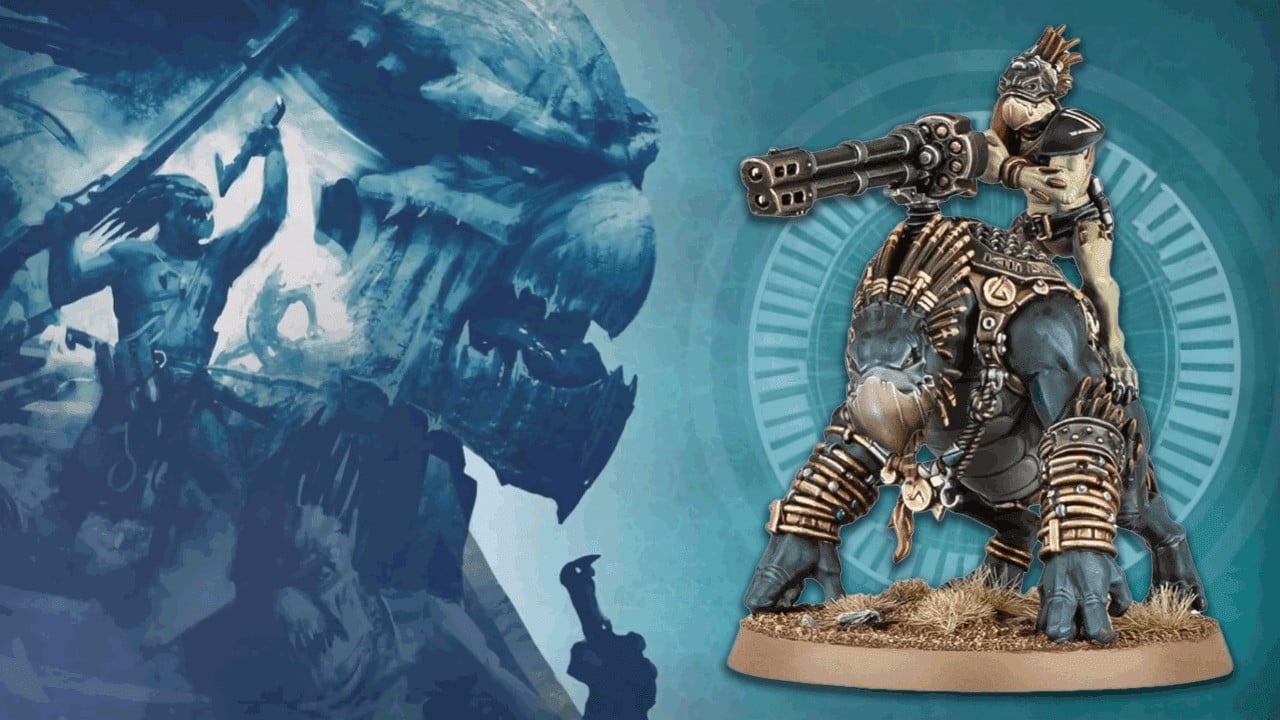
Imagine a bunch of bird-like, carnivorous aliens who can adapt and evolve by consuming the genetic material of their prey. That’s the Kroot for you. They hail from the planet Pech and have a tribal society centered around hunting and war. On the tabletop, Kroot are fast and versatile, making great scouts and ambush troops for a T’au army.
Hrud
Then there’s the Hrud, a race shrouded in mystery and darkness. These rat-like creatures live in the shadows, avoiding direct conflict whenever possible. They have the unsettling ability to manipulate time, causing decay and entropy in their vicinity. While the Hrud aren’t a fully fleshed-out playable faction, their presence in the lore adds a creepy, lurking threat to the galaxy, reminding everyone that not all dangers come with guns blazing.
Tarellians
The Tarellians, also known as Tarellian Dog-Soldiers, are another lesser Xenos race with a notable presence in the Warhammer 40K universe. They bear a grudge against the Imperium, thanks to the brutal wars waged against them in the past.
These reptilian warriors are known for their resilience and combat prowess, often selling their services as mercenaries. While not as prominent as other factions, the Tarellians add a layer of political intrigue and mercenary culture to the galaxy.
Potential Future Additions

The Rak’Gol: These savage, spider-like Xenos are known for their brutal raids on lesser human colonies in 40k. With their heavily cybernetic bodies and a penchant for violence, they could make a terrifying and visually striking addition to the game. Imagine an army that combines the Tyranids’ ferocity with the Necrons’ technological prowess—yeah, that’s the Rak’Gol for you.
The Hrud: Giving the Hrud their own full-fledged faction could bring a new stealth and guerilla warfare playstyle (even as a lesser sub-faction like the Kroot) to 40K. Their ability to manipulate time could translate into unique mechanics on the tabletop, like debuffing enemy units or creating zones of accelerated decay.
The Exodites: Often hinted at in the lore, this is a section of the Eldar who left before the Fall, and probably the most asked for lesser known Xenos army in 40k. They were far enough away from the Fall to not be drawn into the lure of Chaos. They have been talked about for a long time and would be very interesting, considering they are basically less advanced Eldar who ride dinosaurs! What would be cooler than playing on the tabletop with Eldar, riding dinosaurs? We’re not sure.
The Q’Orl: These insectoid creatures have a hive society and advanced biotechnology. A Q’Orl 40k faction could introduce new mechanics around swarming, hive-mind coordination, and biological warfare, adding yet another layer of strategic depth to the game, or maybe even as a lesser part of another faction. However, they don’t have access to the warp for travel.
Final Thoughts on Lesser Known Xenos in Warhammer 40k
The lesser-known Xenos and potential future additions bring a rich tapestry of stories and possibilities to the Warhammer 40K universe. While these Xenos might not always take center stage, they contribute to the depth and diversity that makes 40,000 such a compelling and immersive setting. Each minor race adds its own flavor of danger and intrigue, reminding us that the galaxy is vast and full of surprises.
So, whether you’re a lore enthusiast looking to explore every nook and cranny of the 40K universe or a player hoping for new factions to shake up the battlefield, the lesser-known Xenos have plenty to offer. Keep an eye on the horizon—who knows what new threats and allies might emerge from the lesser shadows in the grimdark future of Warhammer 40K!
Introduction to Xenos in the 40K Universe
Definition & Significance of Xenos in Warhammer 40k

This term is a testament to the Imperium’s xenophobic and often brutal stance towards anything that doesn’t fit its narrow definition of normalcy. But why should you care about these alien beings? The Xenos races bring a rich diversity to the 40,000 universe, adding layers of complexity, intrigue, and constant threat to the already dark and dystopian setting.
Imagine a galaxy teeming with life forms as varied as the stars, each with unique cultures, histories, and motives. From ancient, undead empires awakening from millennia-long slumbers to hyper-evolved insectoid swarms with a singular hunger for biomass, the Xenos factions embody the endless possibilities and dangers of the cosmos, especially when you take into account all the lesser factions in Warhammer 40k.
They challenge the dominance of humanity and its allies, offering players a plethora of perspectives and gameplay styles. So, whether you’re a seasoned veteran or a curious newcomer, diving into the world of Xenos opens up an array of thrilling narratives and strategic depths.
The Role of Xenos

Each faction has its own reasons for waging war, ranging from survival and expansion to revenge and sheer instinctual drive. This perpetual conflict ensures that the galaxy is never at peace, providing an ever-changing battlefield where alliances are rare and betrayal is common.
Take the Eldar, for example. These ancient, psychic space elves once ruled the galaxy but are now a fragmented and declining race, fighting desperately to stave off extinction and the soul-consuming hunger of the Chaos god Slaanesh (and the lesser-known 40k Xenos versions like Ynnari, Exodites, and Harlequins).
Then there are the Orks, whose sheer love for battle makes them a constant, unpredictable threat. They don’t fight for survival or ideology; they fight because it’s fun, and a good scrap is the best thing in life.
On the other hand, the Tyranids are a horrifying force of nature, a bio-engineered swarm that devours entire planets to fuel its relentless advance. They don’t negotiate or conquer in the traditional sense; they consume and move on, leaving nothing but barren husks in their wake.
And let’s not forget the Necrons, an ancient race of soulless, metallic warriors awakening from eons of slumber to reclaim the galaxy they once ruled, a Xenos race who look down on all the lesser factions in 40k. Their cold, calculated strategies and near-indestructible bodies make them a formidable opponent.
These Xenos factions, factions, and the lesser-known ones, among others, bring richness to the Warhammer 40K universe, offering a wide array of stories, conflicts, and strategies for players to explore. Xenos aren’t just enemies to be defeated; they’re integral to the tapestry of the 40,000 narrative, each adding its own flavor of darkness and complexity to the ongoing saga.
So, as you venture into the lore and gameplay of Warhammer 40,000 (40K), take a moment to appreciate the Xenos. They are not merely the “others” in this universe; they are vital threads and races in the grand, brutal tapestry that is Warhammer 40K. Embrace the diversity, understand their motives, and you might just find a new favorite faction to champion on the tabletop.
Frequently Asked Questions About Xenos
What is an Xenos in Warhammer 40K?
In the Warhammer 40K universe, “Xenos” is a term humans use to describe any alien species, including the lesser-known races that don’t have playable factions. It encompasses a wide variety of races, from the ancient and technologically advanced Necrons to the brutal and chaotic Orks.
Which Xenos Faction is the Best For Beginners?
For beginners, the T’au Empire and Orks are great choices. The T’au offer straightforward gameplay focusing on ranged firepower and strategic positioning, while the Orks provide a fun, chaotic experience with lots of close combat action and humor.
How Do Xenos Factions Differ From the Imperium & Chaos factions?
Xenos factions bring unique perspectives and strategies to the game, often focusing on themes like adaptation, advanced technology, or sheer numbers. Unlike the human-centric Imperium or the corrupted forces of Chaos, Xenos factions each have distinct cultures and motives, adding rich diversity to the Warhammer 40,000 universe.
Can You Combine Different Xenos Factions in One Army?
Generally, Xenos factions are played as separate armies due to their unique abilities and lore. However, some factions, like the Ynnari (a subset of the Eldar), allow for a mix of units from different Eldar factions. Tau also uses Kroot to buff up their melee abilities. Always check the latest rules and codices for specific combinations and allowances.
What are some lesser-known Xenos species in Warhammer 40K?
Lesser-known Xenos species include the Kroot, who are mercenaries often allied with the T’au; the Hrud, mysterious rat-like creatures with time-manipulating abilities; and the Tarellians, reptilian mercenaries with a grudge against the Imperium. These Xenos species add depth and intrigue to the 40,000 universe, even if they don’t have fully fleshed-out armies.
Final Thoughts on Warhammer 40k’s Xenos Threat To The Imperium
The Ever-Expanding Universe of Warhammer 40K’s Xenos Factions & Races

The Xenos races are more than just the “other” in this universe—they’re integral to the ever-evolving tapestry of war, politics, and survival that defines Warhammer 40,000 (40K). Whether you’re a battle-hardened veteran or a curious newcomer, there’s always something new to discover about these fascinating factions.
Maybe you’re drawn to the high-tech warfare of the T’au, the tragic and mystical Eldar, or the brutal, chaotic fun of the Orks. Or perhaps the lurking threat of lesser-known species like the Kroot or Hrud piques your interest. Whatever your preference, the Xenos factions offer a rich vein of lore and strategy to mine, promising endless hours of engagement and excitement.
Embracing the Xenos Diversity
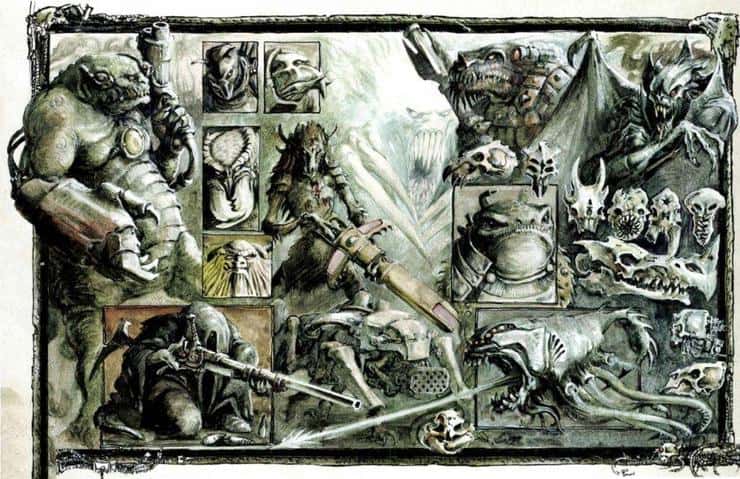
So, there you have it: some of the galaxy’s most terrifying Xenos threats, each more deadly than the last. Whether you’re fighting hordes of Tyranids, ancient Necrons, Orks, or the high-tech T’au, the 41st millennium is a place where alien horrors lurk around every corner. The only question is: will you survive long enough to face them?
Warhammer 40k Factions Explained: A Complete Guide to Every Army
Do you like the Xenos and Lesser Konwn Races in Warhammer 40,000 (40k)? Would you play any of the factions on the tabletop?
